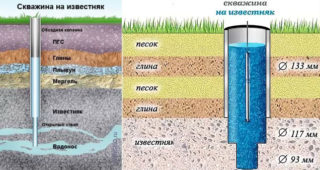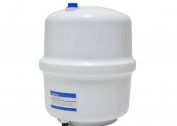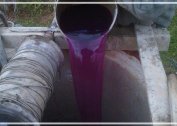Drilling water is widespread in many remote areas. With its arrangement on a private plot, many technical and organizational problems have to be solved. There are several ways to solve them. When choosing the best option, it is necessary to solve the problem of how water wells are classified according to specific conditions.
Aquifer classification
 The well, in fact, is an artificially drilled channel (trunk) to the aquifer, through which water can be raised to the surface. An aquifer becomes a reservoir with a water vein, where the water is in a free state, forming a kind of underground reservoirs. Such layers can be located at different depths and formed by various structures, taking into account their classification.
The well, in fact, is an artificially drilled channel (trunk) to the aquifer, through which water can be raised to the surface. An aquifer becomes a reservoir with a water vein, where the water is in a free state, forming a kind of underground reservoirs. Such layers can be located at different depths and formed by various structures, taking into account their classification.
The following main varieties of aquifers are distinguished:
- High vault. This is the name of water carriers located close to the surface of the earth (2-7 m). These are limited volumes of non-pressure water, surrounded by water-resistant layers (for example, clay). The liquid in them has, as a rule, precipitation and flood nature. The nature of the accumulation is seasonal. The main advantages of such sources: shallow depth of bedding, the possibility of lifting without a pump, low costs when drilling wells. The main disadvantage: poor water quality. Natural filter has a small thickness and is not able to completely clean the liquid. Various chemical compounds may be present in it, and therefore water is intended for technical purposes. For drinking, it can be used only after additional cleaning and boiling. Another disadvantage is a decrease in flow rate (up to a complete cessation of water supply) in the hot season, as well as seasonal instability.
- Primer. The first permanent aquifer in the form of groundwater is located at a depth of 6-22 m. Such a layer is located between the water-resistant layers or is limited only by the lower water-resistance can reach significant sizes. It is formed as a result of seepage by sediment and infiltration from water bodies. An aquifer may be of a pressure or non-pressure type. In the first case, water is under pressure in it. The groundwater level may undergo seasonal changes, decreasing in the summer. Advantages: easy accessibility and ease of lifting to the surface. Water can be safely used for any household needs, but filtration and boiling are required before drinking or cooking.
- Interstratal water carriers. These are water deposits clogged between two water-resistant reservoirs. They are located at a depth of 25-75 m and are always under pressure (pressure type). With independent access to the surface, interstratal accumulations are created by springs. The main advantage is the purity of the water. You can drink it. Disadvantages: deep bedding, drilling difficulties, increased costs for well construction. Due to the presence of constant pressure, water is able to rise independently to a certain height. If it is not enough to exit to the surface, then there is a need to install pumping equipment.
Important! Interstratal deposits located at a depth of over 80-100 m are commonly called the artesian layer. They are characterized by constant, increased pressure. The level of the reservoir is consistent. Water is potable without further purification. Drilling and operating such a well is expensive. When drilling, various problems may arise associated with the passage of particularly hard and complex sections.
Types of wells
The task of the well is to connect the water carrier to the water consumer.An exploratory well is drilled to determine the depth of the water layer and its parameters. Cheaper work is achieved by using drill bits of reduced diameter. When developing the overhead, it is enough to install a drill with a diameter of 10 cm, for deeper deposits - 20 cm. The depth is determined using special probes.
Abyssinian well
 The rise of water from the high water is provided with the help of the Abyssinian well (needle-well, Norton well). The technology of its manufacture is quite simple. A pipe with a diameter of 3-6 cm with a sharp tip (needle) is driven into the ground. The immersion depth can reach 15-20 m. The method is used on light soils (sandstones, etc.). It is impossible to break through rocky exits with a pipe. Problems arise when driving into clay soil. Rise of water is provided with the lever, manually or by means of the pump. The flow rate of the well is up to 5 m3 / h. Sometimes, with the help of the Abyssinian well, it is possible to reach groundwater with a high occurrence.
The rise of water from the high water is provided with the help of the Abyssinian well (needle-well, Norton well). The technology of its manufacture is quite simple. A pipe with a diameter of 3-6 cm with a sharp tip (needle) is driven into the ground. The immersion depth can reach 15-20 m. The method is used on light soils (sandstones, etc.). It is impossible to break through rocky exits with a pipe. Problems arise when driving into clay soil. Rise of water is provided with the lever, manually or by means of the pump. The flow rate of the well is up to 5 m3 / h. Sometimes, with the help of the Abyssinian well, it is possible to reach groundwater with a high occurrence.
The main advantages of the considered wells: low costs, the possibility of self-production, the speed of arrangement, the ability to install almost anywhere (even in the basement of the house). Service life is estimated at 25-35 years. Among the shortcomings, the following is noted: the impossibility of equipment on very hard soil, a surface pump can be used only with a depth of not more than 6 m.
Sand well
The filter well is drilled during the development of a sandy aquifer, located at a depth of 40-45 m. It is drilled using special equipment and immediately equipped with a casing to prevent wall shedding. Metal, plastic or concrete pipes with a diameter of 13-20 cm are used for the column. A filter is installed in the lower part. The rise of water is ensured by a submersible pump.
Advantages of a well on sand: use of small-sized equipment for drilling, which reduces costs; You can install a low power pump; a well is drilled in 1-2 days. Disadvantages: low productivity (up to 2 cubic meters per hour), the dependence of water quality on many factors and its instability, the dependence of the level of water occurrence on the season.
Limestone wells
 To raise water from great depths, a well is made into limestone or artesian wells. They got the name due to the fact that the deep water layer is located in limestone rocks. The drilling depth exceeds 40 m and can reach 120-150 m. In this case, only special, powerful rotary drilling rigs can be used. Higher demands are placed on casing strings. High strength metal or composite pipes are used.
To raise water from great depths, a well is made into limestone or artesian wells. They got the name due to the fact that the deep water layer is located in limestone rocks. The drilling depth exceeds 40 m and can reach 120-150 m. In this case, only special, powerful rotary drilling rigs can be used. Higher demands are placed on casing strings. High strength metal or composite pipes are used.
Advantages of artesian wells: high purity of water, constant level of occurrence of a water carrier, increased productivity (up to 9-10 cubic meters / h), durability (more than 40 years). Disadvantages: increased costs for drilling and construction, manufacturing time (5-8 days), the need for a site for large-sized equipment.
Choosing a well for the site
To the question of which well will be optimal for a particular site, it is necessary to determine the parameters of the water carrier, take into account the need for water and financial capabilities. The Abyssinian well can be equipped with any person in their area, and without any coordination. It will be cheap, but the water will be technical. To turn it into a drinking one, a treatment plant is needed.
An artesian well provides high-quality drinking water, but it is very expensive. As a rule, it is drilled to serve several sites, and even the whole village. In addition, the arrangement of such a well requires special permission from the relevant authorities.
The most widespread are wells on sand. They optimally combine water quality, productivity and drilling cost.They can be equipped with one owner of the site or several owners. Drilling does not require bulky equipment and is carried out at any site by specialized companies. Permits are not required.


